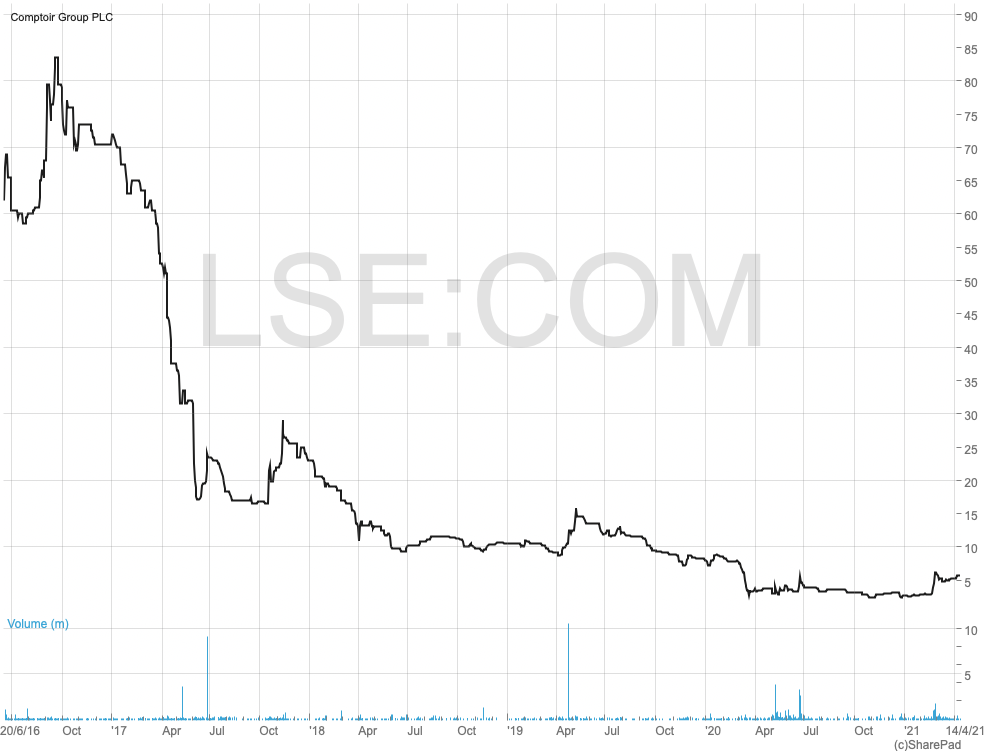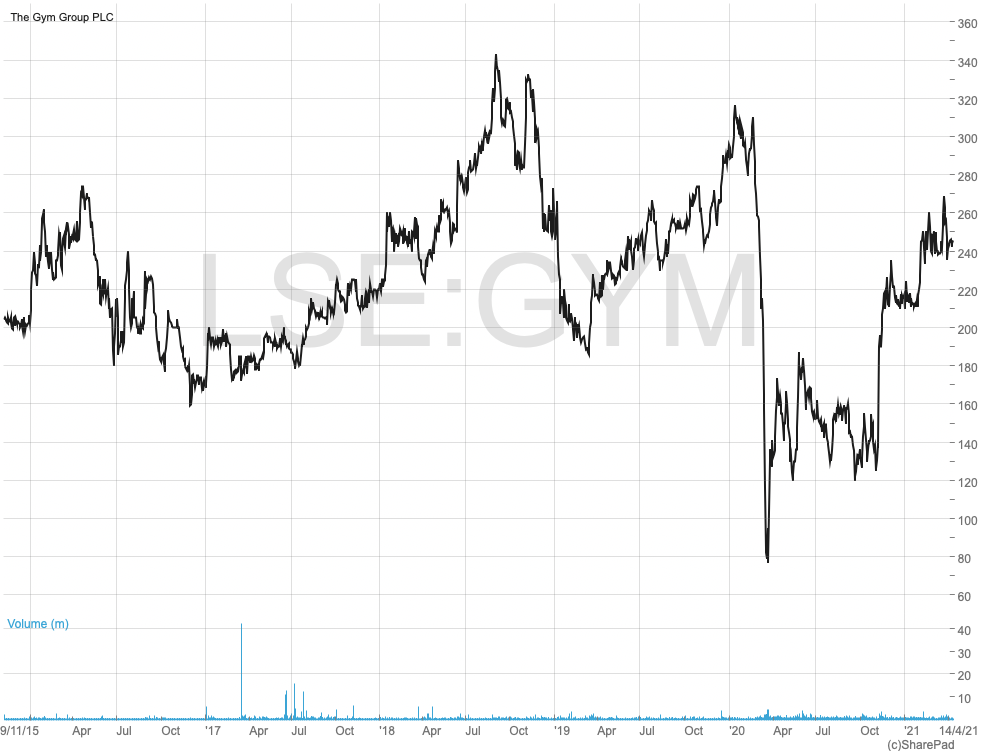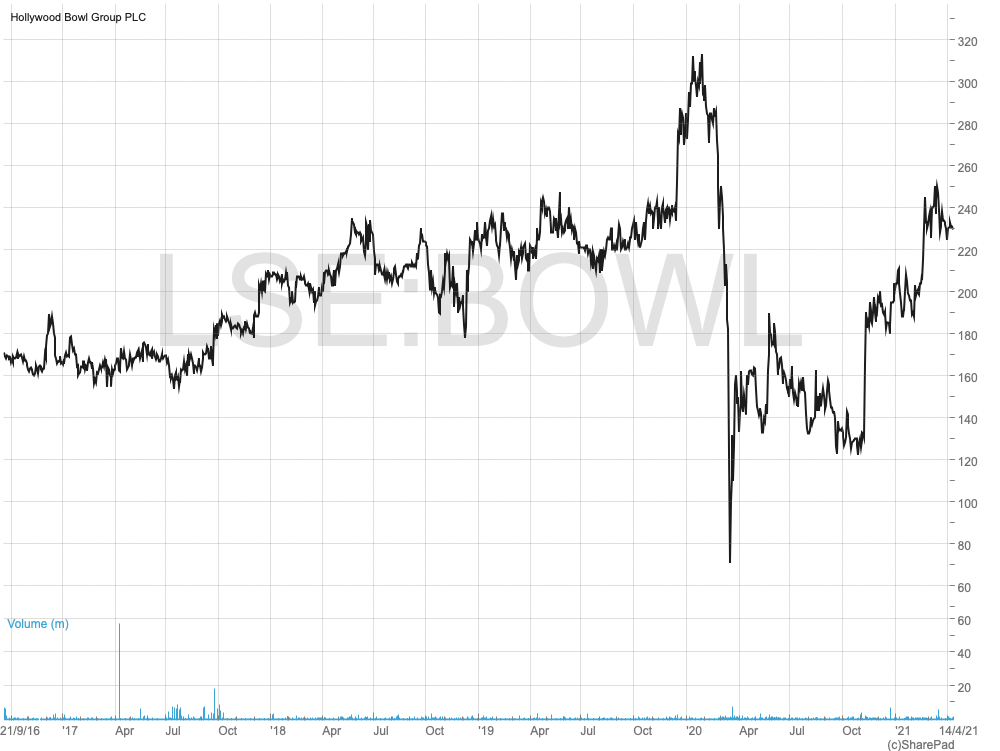Three small caps to benefit from the economic reopening

Richard Gill, CFA, looks at three small-cap companies he believes could see a rapid bounce back over the coming months.
As I write this article on 12th April, I’ve just had my first haircut for five months. The pubs are open, gyms are back in business and the government are even letting us have a holiday again (in the UK at least). That opens a valve for consumers to begin letting off the steam of the massive cash resources they’ve built up over the past 12 months. According to the Bank of England’s Chief Economist, Andy Haldane, UK households will have amassed up to £250 billion in “accidental savings” by July this year, leading to a spending boom once all restrictions are eased.
That provides a boon for many small-cap companies which have been forced to close their operations during the various lockdowns. Here are three which I believe could see a rapid bounce back over the coming months, although it should be noted that some of them remain highly risky and that my analysis assumes there are no further lockdown restrictions implemented.
COMPTOIR
Founded by chef and Creative Director Tony Kitous in 2008, Comptoir Group (LON:COM) runs and owns a portfolio of 24 Lebanese and Eastern Mediterranean style restaurants in the UK. The flagship brand is Comptoir Libanais (meaning Lebanese counter), a mid-range, casual dining restaurant with a Middle Eastern café culture feel. Two further Lebanese and Eastern Mediterranean outlets are operated by the company under the Shawa brand, a smaller offering which serves traditional Lebanese shawarmas – a small meal similar to a kebab. These are complemented by two standalone high end restaurants, Levant and Kenza, located in the West End and City of London, which were well known for their nightly exotic belly dancing entertainment. Comptoir also generates revenue by franchising the Comptoir Libanais brand to other restaurant operators.
At the time of its AIM IPO in June 2016 the company raised £8 million to fund its strategy of having 50 restaurants in the next five years. Of course, the pandemic related lockdowns put a stop to that. But with the economy re-opening again Comptoir is now back for business.

Last orders
Strong annual growth had been seen at Comptoir in normal times, with revenues of £21.5 million and an adjusted EBITDA profit of £2.7 million posted in 2016. In its last “normal” year of trading (2019) revenues had grown to £33.4 million and adjusted EBITDA almost doubled over three years to £5.27 million. EBITDA is a justifiable measure here as the company has large non-cash depreciation charges (£4 million in 2019) and strong operational cash flow.
The most recent numbers reported on trading in the six months to June 2020, a period which saw all of the company’s restaurants shut for over three months. As a result, revenues slumped by 61.4% to just £6.1 million. While down by 78%, the adjusted EBITDA figure of £0.45 million was still in the black. To preserve cash most employees were put on furlough, the directors took huge pay cuts, negotiations with landlords were entered into, non-essential capex was scrapped and government support applied for. While net cash and cash equivalents at the period end were £5 million, £3.8 million of deferred payments and provisions took this down to a “normalised” figure of £1.2 million.
Unfortunately, the company has been very quiet on the newsflow front recently, with the last update to the market being five months ago. That statement confirmed all its venues will be closed until further notice as a result of the enforced November lockdown. In reaction, further measures were put in place to reduce the financial impact, including reducing operating costs and accessing government support schemes. Encouragingly, the company’s website has confirmed that a number of its restaurants have re-opened for lunch and dinner, with no booking required as of 12th April. Others are open for takeaway and delivery, with bookings also being taken for an expected full re-opening on 17th May.
Meal deal?
Shares in Comptoir plunged to a low of just under 2.5p following the announcement of the month long lockdown in November last year. They have since recovered to 5.7p but are well off the IPO price of 50p and the all time high of 83.5p. At the current price the business is capitalised at just £7 million. So if Comptoir can get back to previous highs of making EBITDA of c.£5 million a year then the shares look very cheap indeed in my view.
Of course, the risks here are very high. While there was a phased re-opening of restaurants from 4th July 2020, with 19 opened as at 1st October, we have now seen five months of them being closed again. The latest financial statements are now ten months old so we have a very limited idea of the company’s current financial position. The lack of stock market announcements is also worrying and there are likely to be some restaurant closures this year. We can be encouraged, however, by the recent re-openings.
On balance, while there is a clear risk of Comptoir facing financial difficulties, if it comes through the current year still standing I believe there should be potential for a sharp rise in the share price. It should be noted that founder Tony Kitous has a 47.6% stake in the company, so he is highly incentivised to get the business going again. Comptoir is worth a punt for investors with a high appetite for risk.
THE GYM GROUP
From food to fitness now and gyms were another part of the leisure industry forced to effectively shut for most of last year. FTSE Small Cap index constituent The Gym Group (LON:GYM) recently reported that it had to close for 45% of the available trading days in 2020 due to COVID-19. Yet, it retains a loyal membership base of over half a million people, the vast majority of which say they want to get back to pumping iron and pounding the treadmill as soon as possible.
The Gym Group has a track record of being a fast growing business, opening its first site in Hounslow in 2008. Since then it has grown to operate a total of 186 low cost gyms across the country, making it the second largest player in the value section of the market behind Pure Gym.
Gym Group’s customers are getting themselves a bargain, with the average price per month being just £18.81. Not only is membership cheap, when signing up to one of the company’s gyms customers are given the freedom to come and go as they please without being forced to sign a contract. Other features include gyms being open 24 hours a day/seven days a week (when allowed), free Wi-Fi, the latest fitness equipment and new ranges of free and paid-for studio exercise.
Because revenues are not quite as high as other operators in the industry Gym Group must therefore operate a lean and efficient business model. Underpinning this is a technology driven ethos which keeps overheads low, with customers only able to sign up online or through dedicated kiosks in the gyms. This lowers costs due to there being no requirement for sales and marketing teams and associated administrative expenses.

Heavy lifting
Despite the extended closures, results for the full year to December 2020 were not a complete disaster. While revenues fell by 47% to £80.47 million, the company remained profitable at the adjusted EBITDA level with a £16.8 million profit (albeit down by 77%). Large non-cash depreciation charges contributed to a net inflow from operations of £15.25 million. As a result of significant cost saving measures, along with business rates relief and furlough grants, the impact on profits was mitigated but on a statutory basis a loss of £36.4 million was recorded.
The group looks financially solid though, with a £39.9 million equity raise completed during the year and a £30 million debt facility extension agreed. That left year end net debt of £47.3 million with total borrowing facilities of £100 million.
Encouraging for a quick recovery, there have been higher levels of membership retention during the current lockdown, with 547,000 members as at 28th February. This was down, however, from just under 800,000 at the end of 2019 before the pandemic began. But the signs are that people want to come back quickly, with 97% of current members saying they expect to return to the gym as soon as possible, with 75% stating that fitness will be more important to them than it was pre-COVID.
Gainz to come
The Gym Group is a highly profitable business in normal times, generating free cash of £32.3 million in 2019, pretty much all of which was spent on expanding the estate. At the current market cap, that gives an attractive free cash flow yield of 8% if trading can get back to previous highs. Also attractive here is that the company still has growth in mind, with three new sites opening in April and one in May, four starting work on-site imminently, with a further six leases exchanged. More opportunities are coming available, with the company now seeing more high quality sites at good levels of rent as a result of retail closures.
At the current price of 244p, Gym Group shares have recovered from lows of c.77p last March but remain below the 300p level seen pre-COVID. Following the release of the final results the company’s house broker Peel Hunt retained a 300p target price on the shares, highlighting that the numbers were slightly better than expected and that property market conditions were “ideal” for the firm to expand. Analysts at Barclays see slightly more upside, having a 308p target.
HOLLYWOOD BOWL
Outdoor ten-pin bowling hasn’t really caught on as a leisure activity yet, so this next company has a few more weeks to wait before it can open its facilities. Hollywood Bowl (LON:BOWL) is the UK’s largest ten-pin bowling operator, having a fun-for-all-the-family portfolio of 64 centres under the Hollywood Bowl, AMF and Puttstars (mini golf) brands. The company specialises in operating large, high quality bowling centres, mainly located in out-of-town multi-use leisure parks (typically co-located with cinema and casual dining sites) and large retail parks. The centres are designed to offer a complete family entertainment experience with each centre making money from the three business lines of bowling, on-site dining and licensed bars and games arcades.
Over the past few years the company has been taking advantage of the increasing popularity of ten-pin bowling in the UK, driven by consumers increasing their spending on experiences rather than material objects. According to analysts at Mintel, the UK ten-pin bowling market was worth £311 million in 2018 and grew at an annual rate of 4%. Hollywood Bowl itself has been growing faster than the overall market (pre-pandemic), with revenues up from £86 million to £130 million between 2015 and 2019. Adjusted EBITDA grew from £20.6 million to £38.2 million over the same period.

Bowled over
As you would expect by now, the most recent results showed negative figures across the board. Revenues for the year to September 2020 fell by 39% to £79.5 million, with adjusted EBITDA down by a less pronounced 22% to £29.8 million, after all centres were closed on 20th March. The centres didn’t re-open until August following the lifting of local restrictions.
Encouragingly, there was said to be strong customer demand and better than expected performance in August and September 2020 upon re-opening, despite capacity and trading restrictions. Trading in August represented 69% of prior year revenues, with centres permitted only to have 50% of lanes in use at all times. By the October half-term period, 28 centres were benefiting from lane seating dividers, which increased lane capacity to 67%. Whilst spend per game was impacted by the increased restrictions, games volumes increased over the half term and trading reached 86% of prior year revenues.
March this year brought news of a successful equity placing, the company raising £30 million at a price of 230p per share, with significant director participation seen. The funds were raised to invest in new centre opening opportunities, resume a planned revenue generating and cost saving capex programme in existing centres and to strengthen the balance sheet. Encouragingly, the company said that it expects strong customer demand upon re-opening in May and that it is confident it can recover to pre-pandemic performance levels.
Hollywood is another business which looks set to benefit from good value retail space becoming available and sees opportunities to accelerate its investment plans, with the target being to add at least two centres to its portfolio each year from 2022. There is a current pipeline of seven new ten-pin bowling centres which are expected to open before 30th September 2024. In addition, there are nine centres under heads of terms or at legal stages.
In terms of financials, we have a pretty clear view here given comments in the placing document. As at 28thFebruary 2021 there was cash of £11.3 million and gross debt of £29.2 million. Operational cash burn of c.£3.6 million is expected between March and 17th May 2021, along with rent and deferred rent payments of approximately £5.8 million. Given the debt facilities available and proceeds of the placing, there doesn’t look to be any risk of Hollywood Bowl going bust anytime soon.
In the frame
As mentioned above, management have said they are confident of a recovery to pre-pandemic performance levels. If that happens, and earnings return to around the 15p per share level seen in 2019, then investors are buying the shares on an earnings multiple of just over 15 times, not bad for a growth business. What’s more, a return to the 2019 dividend of 7.43p per share would yield 3.2% at the current price of 230p. That figure doesn’t include any special dividends, with several such additional payments being made over the past few years.
Comments (0)